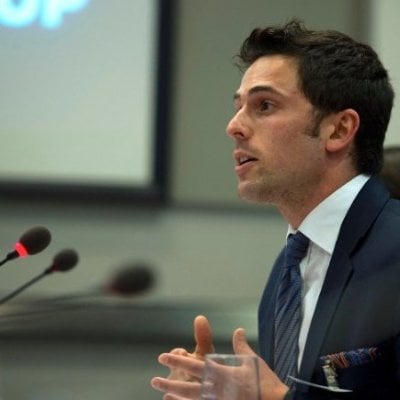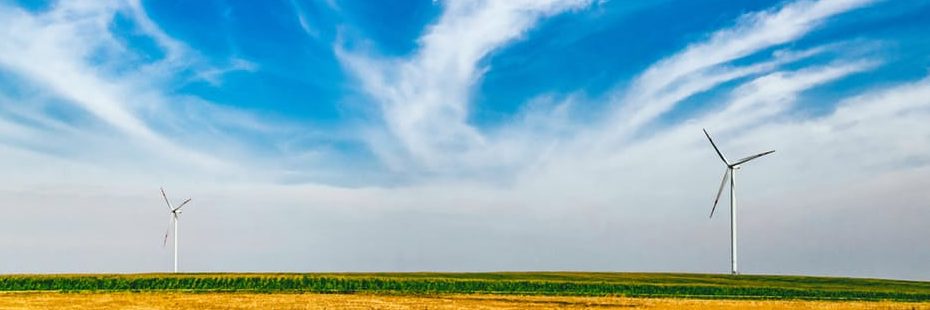The heads of Congress are calling for greater investigation into whether Russian meddling played a role in Donald Trump’s victory over Hillary Clinton last month, but researchers at Columbia Business School (CBS) have another theory. Blame it on the wind—or lack thereof—they say.
In a research paper titled “Weather Affects Voting Decisions,” Professor Adam Galinsky and PhD candidate Jon Jachimowicz from CBS, together with co-authors in Great Britain and Germany, find that wind speed has an interesting effect on how voters cast their ballots at the polls. Specifically, windy days lead voters to seek safety, risk aversion and the status quo—employing what psychologists call a “prevention focus”—in contrast to days with little or no wind, when voters are more likely to vote for a “change” candidate, feeling more willing to take a risk.
To arrive at their findings, the researchers analyzed the 2016 Brexit vote, 10 years of Scottish referendums—including the 2014 Scottish independence referendum—and 100 years of U.S. elections. (The research was conducted prior to the Clinton-Trump face-off last month.)

“Voters are influenced by not only the particular stances of political parties, candidates or campaigns, but also by the environment on the day they make decisions,” says PhD candidate Jachimowicz. Many studies have examined the impact of rain on election results, Jachimowicz concedes. Indeed, rain and more inclement weather can have the profound effect of keeping people from getting to the polls at all. “None have looked at the impact that wind can have,” he continues.
The Pub—Where All the Best Ideas Are Born
The idea to examine the impact wind might have on elections emerged at the pub, Jachimowicz confesses. “It was during the lead up to the Scottish independence referendum,” he recalls.
In 2014, Scottish citizens headed to the polls to vote “yes” or “no” in answer to the question, “Should Scotland be an independent country?”—in other words, should it break away from the United Kingdom. “I did my undergraduate degree in Scotland and was doing my masters at Cambridge at the time,” says Jachimowicz. A few drinks in on a regular gathering every third Friday with buddies at a local pub, he prophesied that the election results in the upcoming referendum would come down to how windy a day it proved.
“I just realized that on days when it was windy, I personally felt like doing something that was safe—I was not motivated to try something or do something new or different,” he says. In contrast, on a beautiful, clear, calm day, he would be much more likely to try something he’d never done before. “At the time, we pretty much just laughed about it—and then forgot it,” Jachimowicz says.
When the September 2014 referendum rolled around, polling forecasts leading up to it were incredibly tight, with the “Yes” side narrowly in the lead. But the final results proved a lot wider, with a 54 to 46 victory for the “No” side. Remembering back to that conversation at the bar, Jachimowicz also remembered the day of the election as a pretty windy one.
To test his theory, Jachimowicz began running analyses, breaking out election results in the 32 different council areas in Scotland and looking at the variation of wind speeds across the council areas and how it related to how people voted. The results bore up the hypothesis: that high-wind conditions make voters more likely to vote for the status-quo preserving option. Under low wind conditions, voters were instead more willing to take risks and vote for change.
Was he actually onto something? Drawing in fellow researchers at Columbia, Cambridge’s Judge Business School in Great Britain and WHU’s Otto Beisheim School of Management in Germany, the assembled team took the examination even further, looking back at 100 years of U.S. presidential elections (1912-2012), ten years of Swiss referendums (2005-2014), and the June 2016 “Brexit” vote by British citizens to leave the European Union. To be clear, the impact of wind speed was evident only in election races that pitted candidates or issues representing differing motivational orientations. To test their theory about wind, they needed elections in which one candidate or one platform represents a status-quo preserving, so-called prevention focus and the other candidate or issue represents a platform of change. “Not all elections have this split off between these two, and wind only affects elections when the election options are at this crossroads,” says Jachimowicz.
With this caveat, U.S. presidential elections also supported the researchers’ thesis. For example, in the 2008 election in which Barack Obama ran on a platform of change and won, wind conditions proved minimal in the areas where Obama faired best.
“From a rational model of political behavior, voting on a windy or non-windy day should have no effect on election outcomes,” co-author Jochen Menges, of Judge Business School and Otto Beisheim School of Management, said in a statement. “The results suggest, however, that in elections that feature a choice between prevention- and promotion-oriented options, wind speed has consequences for the outcome.”
Blame It on the Wind

“Whether we know it or not, wind consistently affects how we vote in elections by appealing to the fundamental desire for either security or change,” CBS’s Galinsky tells us. Admittedly, the effect is small, impacting no more than 1 percent of the final vote, he added. “However, as we have seen recently, sometimes 1 percent can make the difference or be extremely meaningful,” he points out.
Again, this particular research was completed before the Trump-Clinton election, so it didn’t specifically measure whether Trump, considered the change candidate, benefited from low wind conditions on November 8th. “But the closeness of the election, where a swing of just 110,000 votes in Pennsylvania, Michigan and Wisconsin could have changed the outcome, means that every factor, including wind, is worth watching in the future,” read the press release sent out by CBS on the wind-related election research.
Broader Implications? Next Steps?
OK, so having determined that wind can affect election results under certain circumstances, what are the broader implications of these findings? “I think this really gets at a larger question of how does the environment impact the type of decisions we make,” Galinsky says. Other research the CBS professor has been working on looks at the impact the temperature of the zip code in which an individual grows up can have on personality. “Another finding in the literature is that we think differently when we are in rooms with tall versus short ceilings,” Galinsky continues. “In rooms with more expansive ceilings, people are more apt to think in more abstract ways,” he continues, noting that international design and consulting firm IDEO intentionally designed its offices to feature really tall ceilings with lots of open space with this in mind.
Returning to voting, other research has shown that when the polling location for a given precinct is in a school, voters are more likely to support education initiatives. By the same token, when the polling location is a church, voters are less likely to support stem cell research.
“The lesson here is that the environment really is impacting the decisions people make—whether it’s the temperature when you were growing up, the room you are in or the weather on voting day,” says Galinsky. “One of the most important things we teach in business school is decision making—and at the core of this latest research is the fact that there are environmental forces impacting decision making.”
Environmental considerations are critical for business decisions that have nothing at all to do with voting. “Let’s say we are designing a product in a particular type of space or environment, but that’s not where the customer will use that product,” offers Galinsky. “For businesses to recognize and understand whether a customer is going to be attracted to the product, they must test it in that environment.”
Returning to the issue of elections, the CBS researchers do believe the findings from this most recent research could be used to help improve forecast polling. “Sometimes these polls might be inaccurate if they don’t take into account these environmental factors, so understanding more of what those are might help us make better forecasts,” says Jachimowicz. It also makes a strong argument in favor of enacting longer voting periods, says Galinsky. “If voting occurs over months, the impact of weather on a given day diminishes.”
Have the researchers looked into wind conditions and their possible impact on Trump becoming the United States’ next commander in chief? “Not yet, but from my understanding wind conditions were relatively low that day,” says Galinsky. Which, of course, would point to a Trump win based on the prior findings.
“Trump is so blustery that he may have sucked all the wind into himself,” Galinsky joked. Perhaps it was all part of his campaign strategy.





